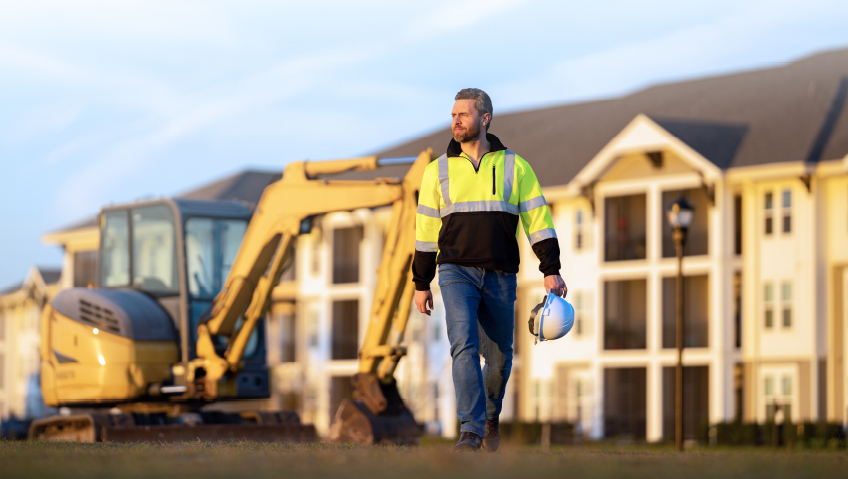Salem, Massachusetts has always been a seafaring city. “Salem’s history came from the ocean, from the water,” says Planning and Community Development Director Tom Daniel. Merchant vessels once circled the globe to bring goods back to the bustling New England port for distribution throughout the country. “It led to great wealth and prosperity here.”
Today, the historic city has returned its attention to the sea, but with a modern twist—offshore wind energy. “It is kind of a reconnection to our heritage of that ocean,” says Daniel. “It’s great to see that cycle coming back.”
After previously featuring the City of Salem for its progressive business climate, forward-thinking initiatives, and diversity, Business in Focus sat back down with city leaders to hear the details on the exciting new wind energy project and its positive impact on the community.
The City of Salem, The Commonwealth of Massachusetts, The Massachusetts Clean Energy Center (MassCEC), Avangrid Renewables, and Crowley Maritime Corporation have formed a public-private partnership to transform land that was once home to a coal-fired electrical plant into the Commonwealth of Massachusetts’ second port for offshore wind. The facility will be a marshaling station where components arrive by water, are collected and stored, and then loaded onto ships heading south of Martha’s Vineyard where they will be assembled and installed.
Despite being located on the other side of the Cape from Martha’s Vineyard, Salem’s port is ideal for the project. “Salem has some unique attributes,” Daniel says. “It doesn’t have any overhead restrictions; there’s no bridge, no power lines, so that’s great. It also has a good federal channel. It’s got sufficient depth and also width, so it’s really unique along the Eastern Seaboard to provide this function.”
And the opportunities for this unique port do not stop with the current fixed-bottom project south of Martha’s Vineyard. The port may have a chance to play a role in another major wind energy project soon. “The federal government will be identifying locations for floating offshore wind in the Gulf of Maine,” says Daniel, “and that’s another huge opportunity for the generation of renewable energy. And Salem is really uniquely positioned for floating wind.”
But for now, the current project will keep the community plenty busy. “We’re excited about this new industry and the role that Salem has for marshaling,” Daniel says. City leaders are focused on workforce development in preparation for the influx of new jobs.
“We’re looking at the various job opportunities that come with the construction of the port, with the long-term operation and maintenance of the station, and even looking at opportunities associated with actual turbine installation out at sea,” says Principal Planner Kate Newhall-Smith. “We have collaborated with our North Shore Workforce Board on a gap analysis, to figure out the industries that we have both in Salem and in the region and see what industries are able to pivot to be a part of the offshore wind [sector] or if they’re already well-positioned to be a part of the supply chain.”
City leaders are deeply invested in employing local talent. “We really want to focus on putting our local and regional community to work in the industry, especially those individuals that are in identified environmental justice communities,” says Newhall-Smith. The City of Salem is working closely with the North Shore Workforce Board to secure a grant with MassCEC to create a pre-apprenticeship program. “This program would be for adults to get the training they need to be able to enter into an apprenticeship program that’s associated with the unions, because we learned that a lot of these jobs will be filled by union workers,” she explains. To develop the program, the team is building on existing partnerships with local educational institutions including Essex North Shore Agricultural and Technical School, Lynn Vocational Technical Institute, and Salem High School.
The team is also working on a practical and logistical level to ensure that potential students “can actually access the program and get a benefit out of it,” Newhall-Smith says. “So we’re doing a lot of work to prepare for that and to make sure that Salem, and the region, is ready to support offshore wind when permitting is done.”
The benefits to Salem are clear, from transforming an underutilized property into an active asset to creating local jobs and supporting clean energy. This last point resonates strongly with the community. “This is important to not just our city or state, but for the planet,” Daniel says. “This is one part of responding to the climate crisis, and I think it’s pretty remarkable for a community like Salem to be able to play the role it will be playing.”
Salem fits well into a bigger picture in which the Commonwealth of Massachusetts is at the forefront of wind energy. “Massachusetts has been a leader in offshore wind development,” Daniel says. “Massachusetts has committed to clean energy goals and greenhouse gas reduction, and the City of Salem has as well. These aren’t things that we can do on our own; they’re things that involve not just the state, but the federal government as well. I think what we have right now is the alignment at the local, state, and federal levels to support renewable energies generally and offshore wind specifically, and those benefits are priceless. The climate crisis is so massive, and this is one piece [toward mitigating] it. It’s not perfect—there is no perfect anything—but this is one piece that is going to help.”
Embracing wind energy is an important component of the larger, statewide initiative. “The Commonwealth of Massachusetts is working really hard to reduce demand of fossil fuels,” Daniel says. “So shifting more and more homes to electricity for heat and cooling [with] efficient heating / cooling systems, looking at electric vehicles and electric vehicle charging stations, looking to reduce the demand for fossil fuels at the same time as increasing the supply of renewable energies and thereby reducing carbon emissions overall. That’s an important role that Massachusetts can play. Those benefits don’t accrue just to the citizens of Massachusetts—they’re for the planet.”
The City of Salem is all set to take part in this team effort to increase the use of renewable energy and make it a win-win for both planet and people. The plan is to “continue to move forward, looking at offshore wind as a great opportunity for the city and the region and continuing to focus on the people who live here,” Daniel says. “And if we make things work well for people who are here, it’s going to be a great place for folks to visit as well.” This is important in Salem, where tourism continues to be a major industry.
The community is thus embracing new opportunities in wind energy while maintaining support for its more traditional sectors. “While we’re working to support this industry coming to Salem and the region, we haven’t shifted focus away from anything else,” says Newhall-Smith. “We haven’t sacrificed our focus on our downtown businesses, our institutions, or the health of our businesses outside the downtown. We’ve added offshore wind into the mix.”
Already known for a robust business sector and thriving tourist industry, adding a new industry is a promising opportunity that will enhance an already healthy local economy. “It’s a lot, but it’s exciting,” Newhall-Smith says. It seems the sky’s the limit for this community eager to harness the power of the wind.






